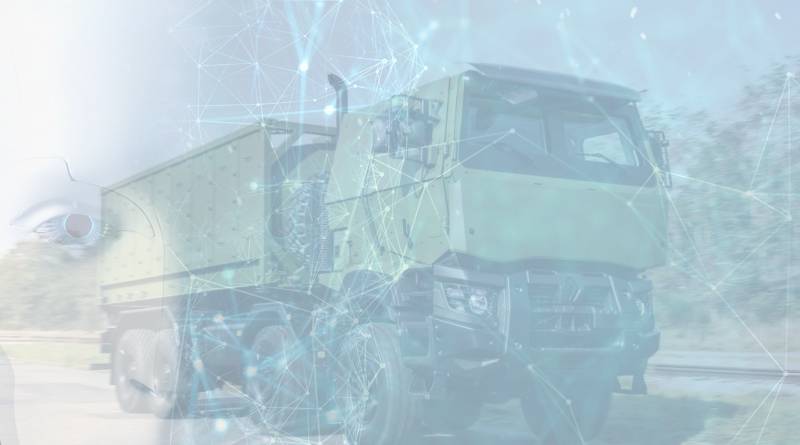In many areas of daily life, artificial intelligence (AI) has completely transformed the landscape. The use of artificial intelligence is being embraced by organizations in both the public and commercial sectors for a broad range of applications, including healthcare. Additionally, for military companies, artificial intelligence technologies provide substantial possibilities to enhance mission performance.
During the past several years, the use of artificial intelligence (AI) has grown more popular. Individuals’ ability to do their professions, communicate with one another, learn, and make choices is altering as a result of artificial intelligence. Organizations’ operational and business decision-making environments, on the other hand, have been quickly evolving, with artificial intelligence now allowing an increasing number of choices.
Deploying artificial intelligence in defence logistics solutions
Defense logistics solutions cover a wider variety of tasks than the majority of people think. In contemporary combat, this involves examining massive amounts of statistics so as to create some important choices about purchases, transportation, infrastructures, and additional aspects of the battlespace. The usage of artificial intelligence, as well as ML in many aspects of logistics, might assist in fast-moving up and creating the process more responsive.
Defense innovation has permeated virtually every segment in the digital era, allowing procedures to be completed quicker and with larger efficiency. The defence sector has reaped the advantages of technology’s functioning as experts strive to better utilise its capabilities and test techniques in order to combat threats. When used effectively in a variety of sectors, technology has the potential to significantly improve military logistics by increasing accuracy, relevance, intelligence, and resources while simultaneously reducing costs.
Below we have listed some major points on how AI has penetrated almost all defence logistics
1. Cost-cutting measures
Defense groups, no matter what they are charged with, must nonetheless function within the confines of a budget. Professionals in the business have the potential to reduce costs by growing the efficiency of the source chain, adding artificial intelligence, evaluating data, and conducting tests more correctly. Because know-how and risk are inextricably linked, the effectiveness of cost management is dependent on the efficiency where technology is used, and the margins of error associated with procedures and computations. This is an area where technology may be advantageous if findings can be obtained more quickly and with greater accuracy.
2. Logistics Throughout the Life Cycle
An innovative life cycle is often associated with an innovated defensive strategy. As an integral component of the cycle’s technical development and risk management, technology plays a critical role in life cycle logistics management. Technology must be utilised with thoughtfulness and precision in order to improve co-ordination sustainability and progress the adjustment of system life cycles. The defence sector may use technology in a variety of ways, whether via direct insertion into the cycle to disrupt it, or through a refresh to bring an old system or piece of technology up to date. Based on how effectively technology is integrated into military depots, the ability to maintain and make changes to life cycle logistics will serve as an indication of industrial readiness in military depots.
3. Recognizing Your Target
Target identification correctness in complex battle situations is now getting amended via the use of AI methods. Through the analysis of reports, papers, news and extra kinds of formless info, military forces are capable to acquire a complete knowledge of possible operating regions. Furthermore, the use of AI in board identification systems upsurges the capacity of SUCH systems to control the location of the targets.
4. Healthcare on the Battleground
Using artificial intelligence (AI) in conjunction with machinelike surgical structures (RSS) and machinelike ground stages in conflict zones may offer remote surgical assistance and evacuation actions. Many countries, in particular, are affianced in the expansion of RSS, RGPs, and additional battleground health methods. Arrangements armed with (AI) could mine troops’ medical data and assist in complicated diagnoses while operating in challenging circumstances.
5. Essential infrastructure
Another issue that emerges in the absence of essential infrastructure, which is one of the most significant impediments to the advancement of artificial intelligence for both military and civilian applications alike. AI is based on sophisticated algorithms which are supported by a huge amount of data; as a result, it is critical to have reliable technology that allows data banks to be located inside the borders of the country. If key AI-based military machinery are made used to access data stored on remote servers that are located outside of India’s borders, this may have a negative influence on any country’s foreign policy goals.
6. Surveillance
By combining AI with geographic analysis, it is possible to collect useful information from linked pieces of equipment such as radars and automated identification systems, among others. This information may aid in the identification of any unlawful or suspicious actions and the alerting of the appropriate authorities in these cases. Robots using artificial intelligence and computer vision combined with the Internet of Things may also assist in the identification and categorization of targets.


